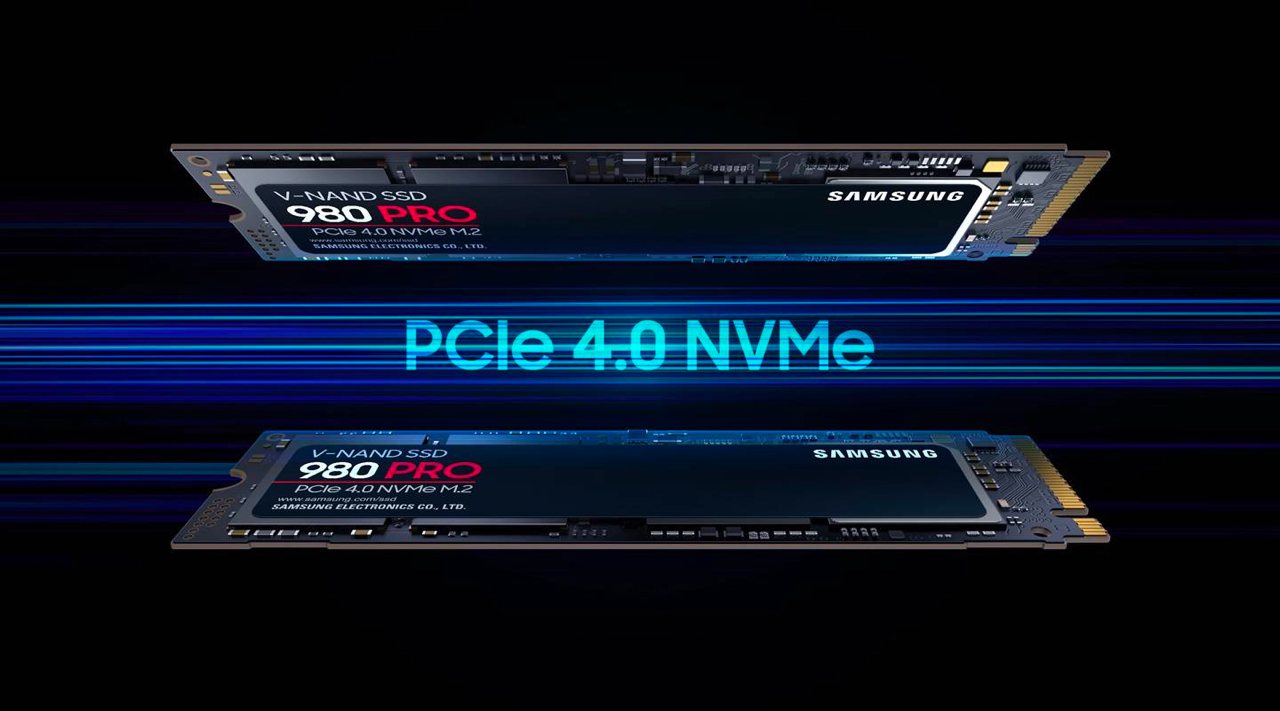Speed up your computer? The first thing that comes to mind is the processor, memory and video card. Some people think about the acceleration of the "hard drive" in the last place, choosing it according to the residual principle. And it's good if a solid-state drive is on the shopping list, and not the only uncontested hard drive. This little cheat sheet will help you better understand modern storage technologies and not get confused when choosing an SSD for your computer.
Form factors: mSATA, M.2, 2.5 "and PCI Express - how are they different?
Indeed, SSDs come in three different form factors. Strictly speaking, there are also external drives that can be of any kind and can be connected to a computer via Thunderbolt or USB, but we are not talking about them now.
2.5 " (two and a half inches) is the typical size of a laptop hard drive. Simple and straightforward, so solid-state drives were also produced in the same case, to make it easier to upgrade old devices, and not to invent anything for new ones. and a SATA cable, power is also like a hard drive. Large aluminum case for good heat dissipation. These are the advantages of a 2.5 "SSD format. The disadvantages grow from them: SATA is a slow interface. It does not allow SSD technology to open up, and even in such there is no need for dimensions, modern solid-state drives can take up much less space.

mSATA is a storage format that is most easily described as 2.5 "without a case. That is, it is a small board with memory chips, having data and power connectors according to the SATA standard. It is more compact than the previous version, but with the same slow interface.

M.2 is the modern compact format for most SSDs. It is essentially a board with microcircuits that connects directly to the motherboard. No cables or bulky enclosures. Initially, this format appeared where it is most crowded, that is, in laptops. But over time, it took root in desktop computers. The only drawback of this solution is the lack of heat dissipation: some models operating under high loads require additional radiators. In most cases, when choosing an SSD for a home gaming computer, it makes sense to choose the M.2 format. By the way, the numbers 2280 in the title (there are still options 2230, 2242, 2260) indicate only the size of the board in millimeters, where 22 is the width (all have the same), and 80 is the length (essentially affects only the space occupied inside the system block).

PCI Express - the main thing here is not to get confused. Look: this term refers to both the data interface and the physical connector on the motherboard. Now we are talking just about the connector, or rather, about the form factor of an expansion card installed in a PCI Express slot. The advantage of this SSD implementation is the ability to use a faster PCIe x8 configuration. But such an expansion card, large and occupying an unexpected slot, is more suitable for a server, although you can experiment at home if your budget allows.

What is NVMe and how is it different from SATA?
Now, this is an important point. With 2.5 "and mSATA form factors, everything is clear, they work on the SATA interface. Drives in the format of cards for the PCI Express slot work on the PCI Express interface. But the M.2 standard forces us to understand these interfaces deeper. because there are M.2 drives that run on both the slower SATA protocol and the faster PCIe.
SATA is a good old interface for connecting hard drives with the familiar red wires (oldfags remember an even older IDE with wide gray cables, but these ancient technologies are useless for SSDs). The maximum SATA bandwidth reaches 600 MB / s. This was enough for hard drives, but for fast flash memory this is clearly a bottleneck. Therefore, an M.2 drive working via a SATA interface (it can be distinguished by two key slots on the connector with contacts) is not the fastest solution.
NVMe (Non-Volatile Memory Express) is a faster storage protocol. Physically, it uses the same M.2 connector, but transfers data over the PCI Express bus. Which, in turn, has different versions, we will tell you more in more detail.
PCIe 4.0: What's the Difference From PCIe 3.0?
Speed. Yes, there is in the specification about increased reliability, but the main difference is in speed. The bandwidth of the fourth version of the PCIe interface is double that of the third. The maximum speed of one channel (PCIe x1) is almost two gigabytes per second (1.969 GB / s). For SSD-drives working through an M.2 slot with a PCIe x4 interface, the ceiling will be, respectively, 7.87 GB / s. As you already know, SATA III has a limit of only 600 MB / s, which is about 13 times slower.

What about Apple's SSD?
Apple, as always, has its own way. Solid state drives in MacBooks and aimags have gone through a common interface evolution, moving from SATA to PCIe. But the connectors on the drives have their own, incompatible with the classic M.2, although the data transfer protocol is the same. So if you upgrade your MacBook, choose a drive supported by MacBooks, and pay attention to the features of your particular model.

What is IOPS and what does it affect?
Iops (stands for input / output operations per second) is an important parameter of drive speed. We have already figured out the data transfer rate over different interfaces, but there is one more nuance. How long are the delays when information gets into the drive and when it is retrieved from there? This question is exactly what the IOPS indicator answers. And SSDs have a much higher rate than classic hard drives. Purely mechanically: a hard disk, in order to read information from a certain area of the plate, takes some time to physically "bring" the magnetic head to the right place. Solid state drives do not have this complexity. Therefore, while HDDs measure IOPS in hundreds, SSDs have tens and hundreds of thousands, and for the most productive ones like Samsung SSD 980 PRO this parameter reaches a million.
SLC, MLC, TLC, QLC - what's the difference?
The difference is the number of bits of information that can be stored in one memory location. The more, the more densely the information is packed in the drive and the larger its capacity at the same cost. However, the access speed may be lower. Let's go in order.
SLC (Single-Level Cell) is a type of flash memory where one bit of information is stored in one cell. Such memory will be fast and energy efficient, but very expensive.
MLC (Multi-Level Cell) - here in one cell you can store not one bit of data, but a lot. As many as two (because cases with a large number of bits later received their own names, more on them later). Accordingly, the data density is higher, the cost per gigabyte is lower, but the speed and endurance of the drive are theoretically inferior to SLC.
However, modern technologies allow these nuances to be gradually compensated. In order not to face purely physical limitations in the production of memory chips, cells began to be made three-dimensional, that is, several cells were placed on one layer of a microcircuit at once, as if "in height". This is how 3D consoles appeared for TLC and QLC memory types.
TLC (Triple-Level Cell) - three data bits per cell. Such memory can also be called 3-bit MLC or MLC-3, because it is actually one of the varieties of MLC. Modern production technologies already allow such chips to be made very fast.
QLC (Quad-Level Cell) - four data bits per cell, that is, 4-bit MLC. At the moment, such memory is considered the most accessible, although it is inferior in speed characteristics to the other types described.
What does V-NAND mean?
This is one of the types of 3D flash memory mentioned above. First, you should know that all flash memory is divided into two large classes NAND and NOR. They differ in the logic of organizing data access, and for modern SSDs, only NAND memory is used. But the clarification "V-NAND" says that this is a memory with a vertical type of organization of a three-dimensional structure of cells. There is also a horizontal type, but you will hardly need to delve into such subtleties when choosing a specific drive.
Okay, what does TBW say?
About how much total data can be guaranteed to be written to this drive. This is one of the indicators of drive reliability. As you know, SSDs are also subject to wear and tear, and one cell cannot be overwritten an infinite number of times. The higher the manufacturer's TBW (Total Bytes Written) parameter, the more data can be written to the disk during its life cycle. TBW is usually measured in terabytes. For a home user, a value of 100 may be enough for a dozen years of use, but for a server that constantly overwrites data, this may not be enough.
What is SMART and why is this technology needed?
SMART sounds like smart, that is, something smart. In the case of drives, this is self-monitoring, analysis and reporting technology, that is, the technology of self-analysis of the state of the device. A hard drive or SSD that supports SMART can provide timely warning of impending operational problems. More precisely, not so, the drive can only determine and store a set of important parameters, but the operating system or a special program will technically inform the user about them. SMART technology was originally developed specifically for hard drives, so it has many parameters related to its anatomy. But with the advent of SSD, special parameters appeared for them (the number of write cycles, counters of various errors, the state of the pool of spare blocks). This is an important signal for the user: if SMART says about the wear and tear of the drive, you can take care of buying a new one and backing up your data in advance. And not in a panic and at the last moment, as usual.
Hooray! Now you can easily decipher an inscription like "M.2 2280 PCIe 4.0 x4 V-NAND TLC" (hint: this is a 22x80 mm drive with an M.2 connector, which operates on the fast PCI Express 4.0 bus in four threads and contains chips of "three-dimensional "Flash memory with the ability to store three bits of data in each cell). You can take it.
Powered by Samsung SSD 980 PRO
This editorial, tailored to the interests of gg readers , was co- authored by an advertiser, Samsung , interested in making you aware of the capabilities of modern SSDs and, after reading this text, on what to look out for when choosing such a data storage for your computer.

Samsung SSD 980 PRO: Next Level SSD Performance
- Samsung's first consumer solid state drive (SSD) with PCIe 4.0 NVMe
- up to 7000MB / s read speed (2x faster than PCIe 3.0 SSD and 12.7x faster than SATA SSD)
- Nickel plating for overheating control and heat dissipation from the NAND chip
- built-in proprietary thermal control algorithm increases durability and stability
- Samsung Magician app for health monitoring, performance optimization and data protection
- quality and reliability of the world leader since 2003 in the production of flash memory
Samsung SSD 980 PRO
Top SSD for high performance gaming and applications
This is an M.2 2280 NVMe drive with PCIe 4.0 interface. The declared read and write speeds are 7000 and 5000 MB / s, respectively, and the I / O speed reaches one million IOPS. To combat overheating, a passive heat dissipator, nickel plating and special thermal control algorithms are used. Drive status, SMART settings, encryption and performance options can be viewed in Samsung Magician Software.
 better not to find
better not to find








